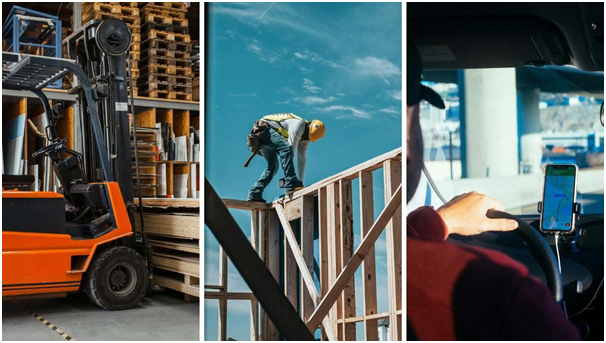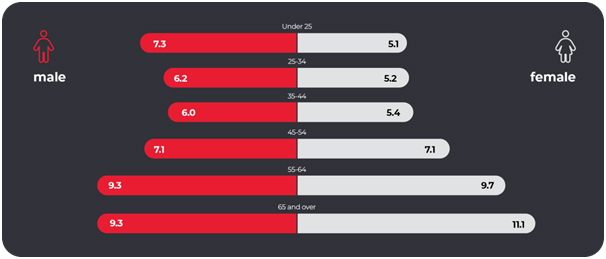Safe Work Australia’s report titled Key Work Health and Safety Statistics Australia 2025, which is the most recent one, uncovers, unfortunately, very bad statistics regarding the deaths at workplaces.
In the year 2024, there were 188 fatalities due to accidents at workplaces in Australia, which was a decline compared to the 200 deaths in the year 2023. Nonetheless, 80 per cent of these fatalities happened in just six major industries, which included agriculture, forestry, and fishing; public administration and safety; transport, postal, and warehousing; manufacturing; healthcare and social assistance; and building.
As a result of improvements in safety measures, there remain risks due to the concentration of deaths in these sectors. The agency pointed out that these industries must not only continue to be a focus of interest but also of action so that no worker’s life is cut off because of hazards that could be avoided.

Safe Work Australia’s 2025 report reveals alarming workplace death statistics.
Are Australia’s Workplaces Becoming Safer?
The report is not one-sided in its views. On the one hand, the situation regarding safety is still getting better overall. The work-related injury rate in Australia is reported to be 3.5 per cent, which is substantially lower than the global average of 12.1 per cent.
The good news is a result of the increased alertness, more strict enforcement of regulations, and the use of better safety technologies in different sectors. However, still being the case, the number of 188 fatalities gives a human cost which continues to be indicated as unacceptable in society today.
Safe Work Australia’s CEO, Marie Boland, made a statement reinforcing the need for a continued commitment. She said, “Behind every statistic there is a person, a family, workmates, a community and a story.”
What Causes Most Workplace Deaths In Australia?
The 2025 report revealed that incidents involving vehicles are still the main reason for deaths at work, with a toll of 79 deaths or 42% of the total. Falls from heights were placed second with 13% or 24 dead.
The different causes in question are still in line with national trends, especially in the already mentioned transport and construction sectors, which are the most affected by such incidents. Experts anticipate that signing on for more vehicle safety systems and adhering to proper fall prevention practices would cut down the figures significantly in the coming years.

Safe Work CEO Boland emphasises personal stories behind workplace statistics.
Mental Health Claims On The Rise Across Australian Industries
Besides, the report pointed out an alarming increase in the number of persons claiming compensation due to mental health issues. Such claims represent 12 per cent of total serious workers’ compensation cases, besides being a 14.7 per cent increase over the previous year. Employees suffering from mental health problems are, on average, losing almost five times more work time than colleagues with physical injuries.
This trend signifies the growing acceptance of psychological hazards in the workplace, with the cases being mainly of burnout, stress, bullying, and exposure to trauma. Safe Work Australia has called on employers to see mental health as a primary component of the workplace safety net.
Australian Industries Workplace Fatalities 2025: A Persistent Challenge
In spite of the improvements made, industries such as agriculture, forestry, and fishing are still ranked among the most dangerous in Australia in 2025. These activities frequently require isolated locations, the use of heavy machinery, and unpredictable weather conditions, thus elevating the risks workers are exposed to.
The construction and transport sectors have high death rates, mainly a result of falls, injuries from lifting, and vehicle accidents. Even healthcare and social assistance, which have always been viewed as safer workplaces, are now suffering from stress-related violence and fatigue-linked accidents as their main threats. These trends call for a specific safety program designed for these industries, as well as constant monitoring of the enforcement of safety standards set at the national level.

Despite safety improvements, agriculture, forestry, and fishing remain Australia’s riskiest.
A Call For Safer Workplaces Nationwide
The conclusions of Safe Work Australia act as a signal that even though safety is getting better, the task is still incomplete. The watchdog urged all sectors to enhance compliance, introduce new safety technologies and develop stronger safety cultures.
Ms Boland’s statement encapsulated it: every employee, no matter what their job or industry, is entitled to go home safe at the end of the day.
Also Read: Qantas Ordered to Pay Record $90 Million for Pandemic Layoffs in Historic Workplace Law Ruling
FAQs
- What will be the most hazardous professions in Australia by 2025?
The sectors posing the highest risk are: agriculture, forestry, and fishing; transport; construction; manufacturing; public administration and safety; and health care.
- What was the number of fatalities at Australian workplaces in 2024?
The total number of work-related deaths was 188, a decrease from 200 the previous year.
- What are the main accidents that lead to death at Australian workplaces?
The first cause is vehicle accidents, and the second is falling from heights.
- Is there an increase in mental health claims in Australian workplaces?
Yes. Mental health claims represent 12 per cent of serious cases, which is a yearly increase of 14.7 per cent.












